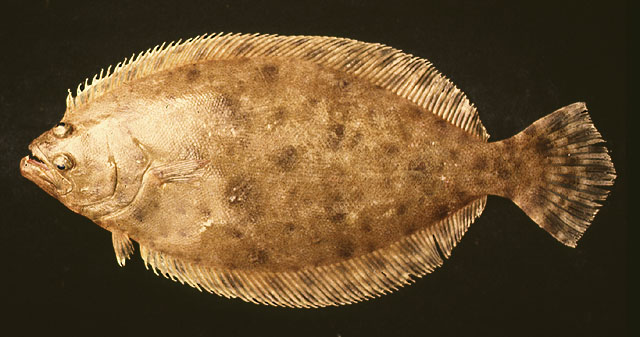| Paralichthyidae (Large-tooth flounders) |
| 50 cm TL (male/unsexed) |
|
demersal; marine; depth range 0 - 185 m |
| Western Central Atlantic: Colombia and Venezuela to Trinidad and Tobago. Reported to range south to Suriname (Ref. 13608). |
|
Dorsal soft rays (total): 69-80; Anal soft rays: 55-64. Head moderately pointed; brown with numerous roundish dark spots on head, body and fins, many as large or larger than eyes; also numerous small dark and small pale spots; teeth uniserial, the anterior ones enlarged; origin of dorsal fin above or slightly anterior to the front edge of eyes; caudal fin biconcave; pelvic fins short-based, symmetrically placed, and subequal (Ref. 13442). |
| Found over muddy and sandy bottoms. Marketed fresh. |
|
Data deficient (DD); Date assessed: 29 January 2013 Ref. (130435)
|
| harmless |
Source and more info: www.fishbase.org. For personal, classroom, and other internal use only. Not for publication.
